Two block A of 6kg and B of 4kg are placed in contact with each other as shown in figure
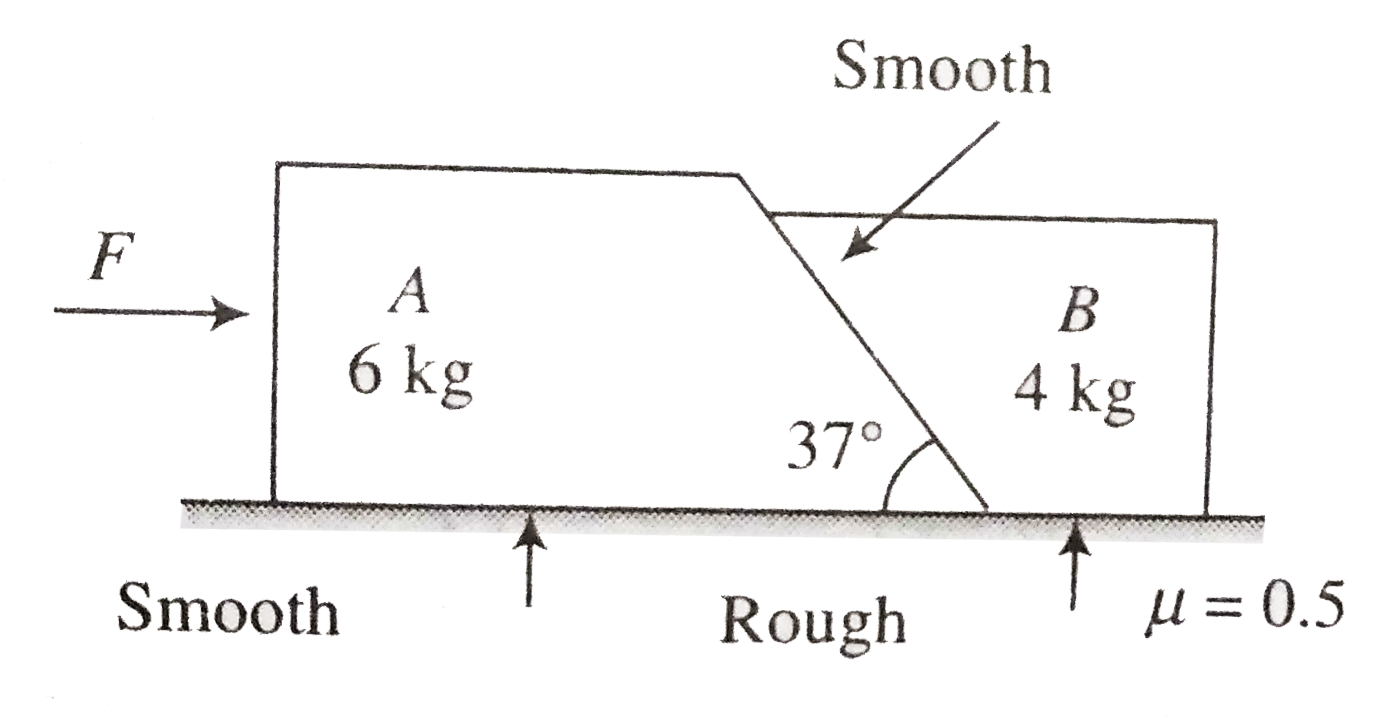
There is no friction A and ground and between both the blocks .The coefficient of friction between B and ground is 0.5 A horizontal force F is applied on A find the minimum and maximum value of F which can be applied so that both blocks can move combinely without any relative between them.
10N,50N
12N,50N
12N,75N
None of these
The correct Answer is:c
F−Nsin37∘=6a⇒F−3N5=6a…(i)

N2=4g−Ncos37∘=40−4N5…(ii)
Nsin37∘−f=4a…(iii)
From Eqs (i) and (iii) F−f=10a
⇒F−mN2=10a….(iv)
⇒F−m[40−4N5]=10a....(v)
Put the value of N from Eqs (i) in (v) and also put the value of m to get a=5F−6042
Now to start motion a>0⇒F>12N
So the minimum force F to just start the motion is 12N
Now miximum F will be when N2 just becomes zero Then from Eqs(ii) N=50N
From Eqs (i) and (iv) we get F=75N (by putting N2=0) If we apply F>75N then B will start sliding up on A but we do want this
Topper's Solved these Questions
- BOOK - CENGAGE PHYSICS ENGLISHCHAPTER - NEWTON'S LAWS OF MOTION 2EXERCISE - Multiple Correct2videos
NEWTON'S LAWS OF MOTION 2
- BOOK - CENGAGE PHYSICS ENGLISHCHAPTER - NEWTON'S LAWS OF MOTION 2EXERCISE - Linked Comprehension52videos
NEWTON'S LAWS OF MOTION 2
- BOOK - CENGAGE PHYSICS ENGLISHCHAPTER - NEWTON'S LAWS OF MOTION 2EXERCISE - Subjective21videos
NEWTON'S LAWS OF MOTION 2
- BOOK - CENGAGE PHYSICS ENGLISHCHAPTER - NEWTON'S LAWS OF MOTION 1EXERCISE - Integer5videos
NEWTON'S LAWS OF MOTION 1
- BOOK - CENGAGE PHYSICS ENGLISHCHAPTER - PROPERTIES OF SOLIDS AND FLUIDSEXERCISE - INTEGER_TYPE2videos
PROPERTIES OF SOLIDS AND FLUIDS
Similar Questions
Two blocks A and B are lying on the table as shown in the figure. The coefficient of friciton between block A and block B is μ. The coefficient of friction between block B and ground also μ. An external force F is applied in the direction shown. The maximum value of the force F that can be applied without moving the blocks.
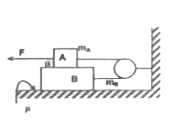 View Solution
View SolutionThe maximum value of F which can be applied on the system shown in figure so that both blocks move together with same acceleration is
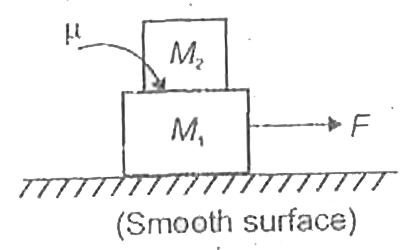 View Solution
View Solution
Knowledge Check
- Question 1 - Select One
Two blocks A and B of masses 10 kg and 15 kg are placed in contact with each other rest on a rough horizontal surface as shown in the figure. The coefficient of friction between the blocks and surface is 0.2. A horizontal force of 200 N is applied to block A. The acceleration of the system is (Take g=10ms−2)
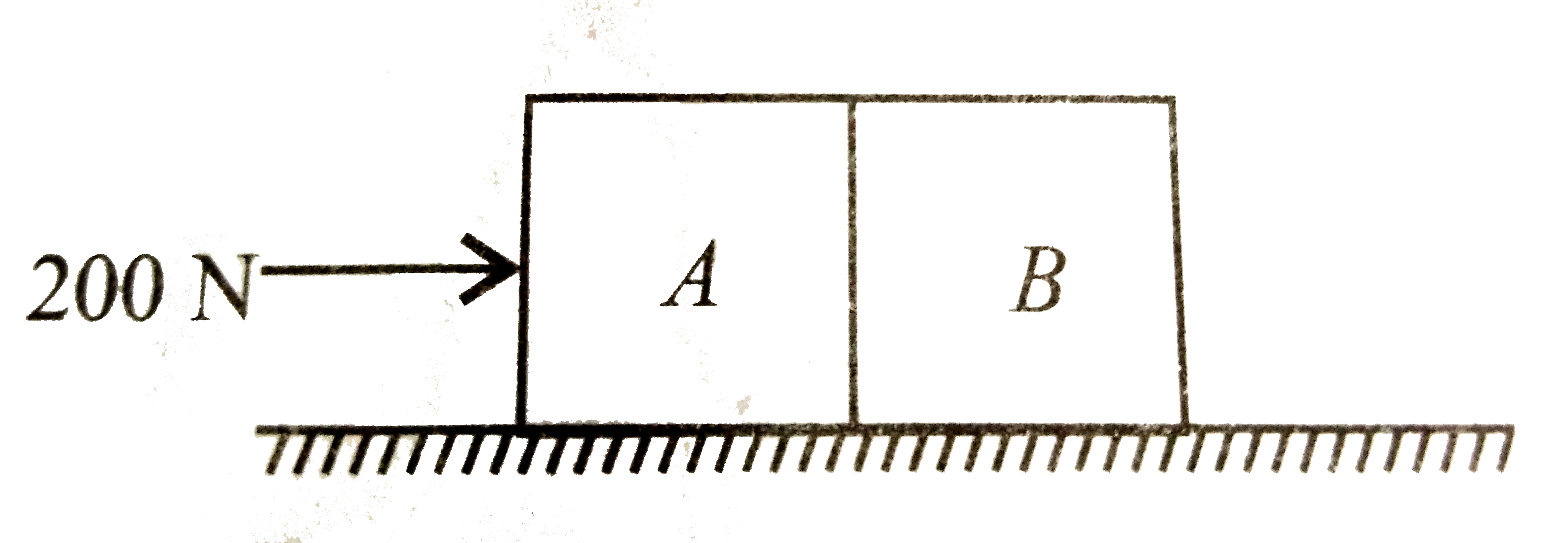 A4ms−2B6ms−2C8ms−2D10ms−2
A4ms−2B6ms−2C8ms−2D10ms−2
A plank of mass 10 kg and a block of mass 2 kg are placed on a horizontal plane as shown in the figure. There is no friction between plane and plank. The coefficient of friction between block and plank is 0.5 .A force of 60 N is applied on plank horizontally. In first 2 s the work done by friction on the block is
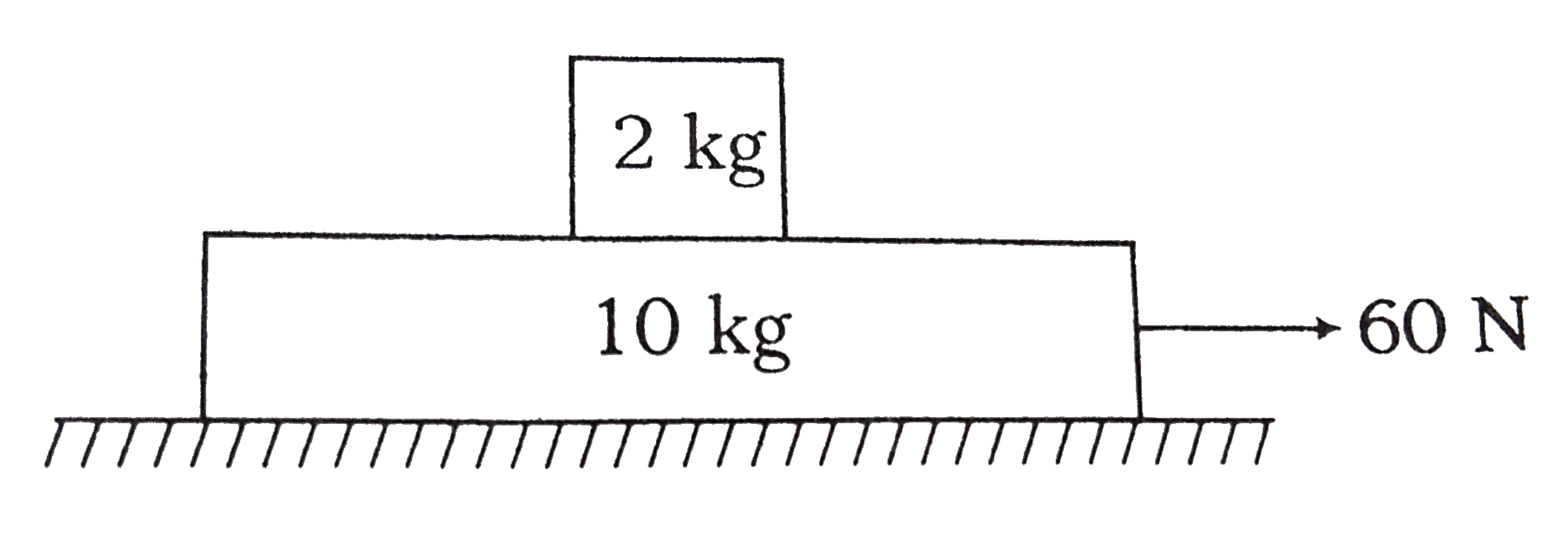 View Solution
View SolutionBlock A and B of masses 5 kg and 10 kg are placed as shown in figure. If block A is pulled with 50 N. Find out acceleration of the A and B. If coefficient of friction between A and B is 0.5 and between B and ground is 0.4.
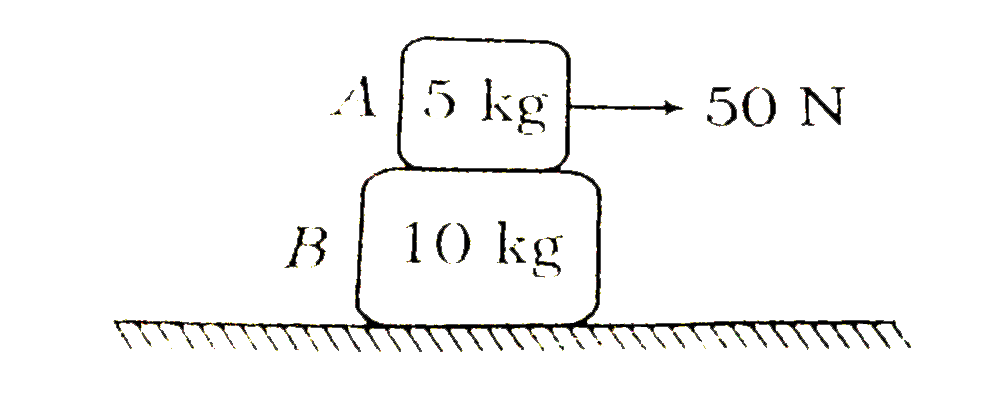 View Solution
View SolutionBlocks A and B of masses 5 kg and 10kg are placed as shown in figure. If block A is pulled with 50 N. Find out acceleration of the A and B. if coefficient of friction between A and B is 0.5and between B and ground is 0.4.
 View Solution
View SolutionTwo block A and B are as shown in figure. The minimum horizantal force F applied to the block B for which slipping begins between B and ground is :
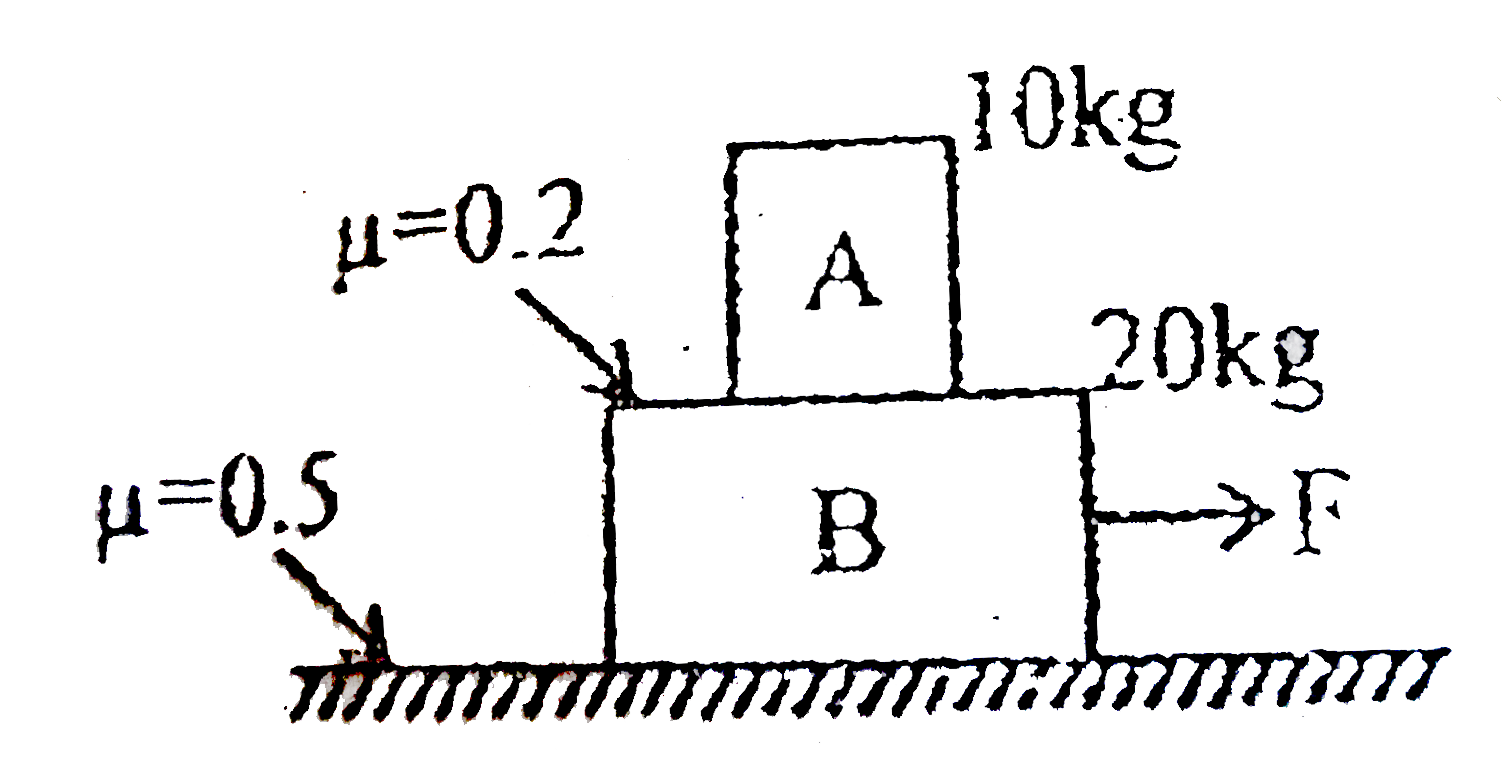 View Solution
View SolutionTwo blocks of masses m and 2 m are placed one over the other as shown in figure.The coefficient of friction between m and 2m is μ and between 2m and ground is μ3. If a horizontal force F is applied on upper block and T is tension developed in string, then choose the incorrect alternative.
 View Solution
View Solution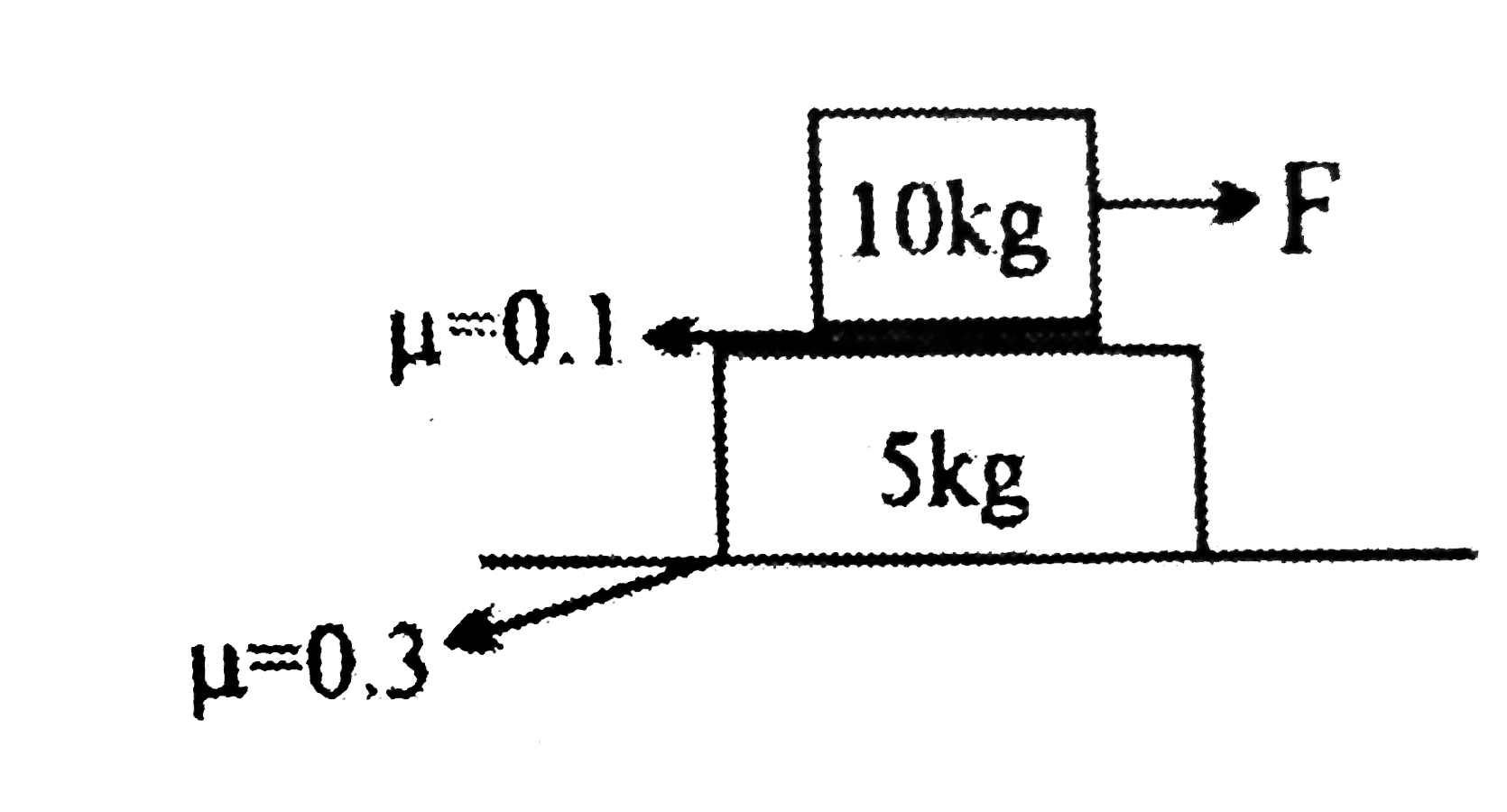
When F = 2N, the frictional force between 5 kg block and ground isView SolutionThe coefficient of static friction between the two blocks shown in figure is μ and the table is smooth. What maximum horizontal forced F can be applied to he block of mass M so that the block move together?
 View Solution
View Solution

